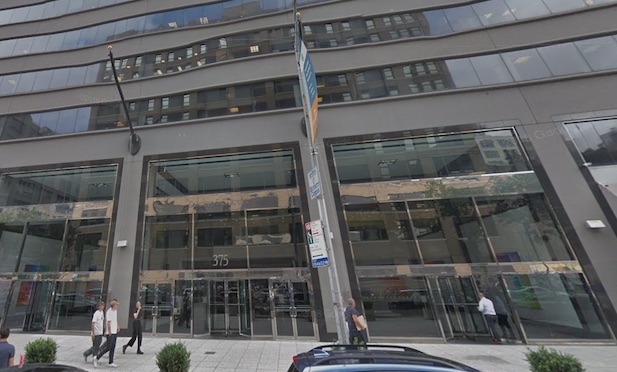 375 Hudson St., last block with over 100,000 square feet of office space available in Hudson Square/ Image: Google Maps
375 Hudson St., last block with over 100,000 square feet of office space available in Hudson Square/ Image: Google Maps
NEW YORK CITY—Hudson Square, once known as the Printing District, historically had large buildings which housed printing presses. As the internet moved traditional publishing to digital communications, companies repurposed the expansive spaces. With sizable floor plates, these buildings provided value added space attracting TAMI (technology, advertising, media and information) companies.
However, in a GlobeSt.com interview, Transwestern's research manager Danny Mangru points out Google's taking up almost a half million square feet in Hudson Square in Q4 2018, pushed the submarket's availability from 14.3% to 6.9%. “That's a significant drop,” he says.
In December 2018, Google announced it was leasing 280,000 square feet from Jack Resnick & Sons at 315 Hudson St. and 180,000 square feet at 345 Hudson St. from a joint venture of Hines, Trinity Holdings and Norges Bank Real Estate Management. The search engine tech giant said it planned to invest over $1 billion in creating a 1.7 million-square-foot campus, Google Hudson Square. This also included signing a letter of intent at St. John's Terminal, located at 550 Washington St.
In the calculations, Transwestern included the two Hudson Street locations but not St. John's Terminal, which Mangru notes is not listed so technically not on the market.
The real estate advisory and leasing firm's research shows Hudson Square previously had high availability. Its 10-year historical average was 12.8% compared to Midtown South at 10.2%. With Midtown South, availability is also decreasing as tenants are seeking value-add space within that district's limited inventory, especially anticipating the Penn Station and Hudson Yards developments.
 Danny Mangru, research manager, Transwestern
Danny Mangru, research manager, TranswesternMangru states there are two points with the Google Effect. First, it's the first time Hudson Square's availability has dipped below that of Midtown South. He says this limited stock is forcing TAMI tenants to look in other submarkets. “With the highly desirable spaces that the TAMI tenants are looking for in Hudson Square, there is just no more availability left,” says Mangru. He adds they are moving to Lower Manhattan and pockets in Midtown.
He points out 375 Hudson St. has roughly 270,000 square feet available. But that's the last block available of space over 100,000 square feet. This property is also owned by Hines, Trinity and Norges Bank. They purchased it from Tishman Speyer in August 2017 for $615 million according to Real Capital Analytics.
The second point of the Google Effect looks at average asking rent in Hudson Square. “The space they took was priced over $80 per square foot. When they took the property off the market asking rent dropped about 5%. It's now sitting at $72.81,” say Mangru. When the premium space was no longer part of the calculations, it was was removed from raising the statistical average. Transwestern's data shows average asking rent in Midtown South continues to rise. Now it's at $79.99, with more than $100 per square foot premium space added.
© Touchpoint Markets, All Rights Reserved. Request academic re-use from www.copyright.com. All other uses, submit a request to [email protected]. For more inforrmation visit Asset & Logo Licensing.







